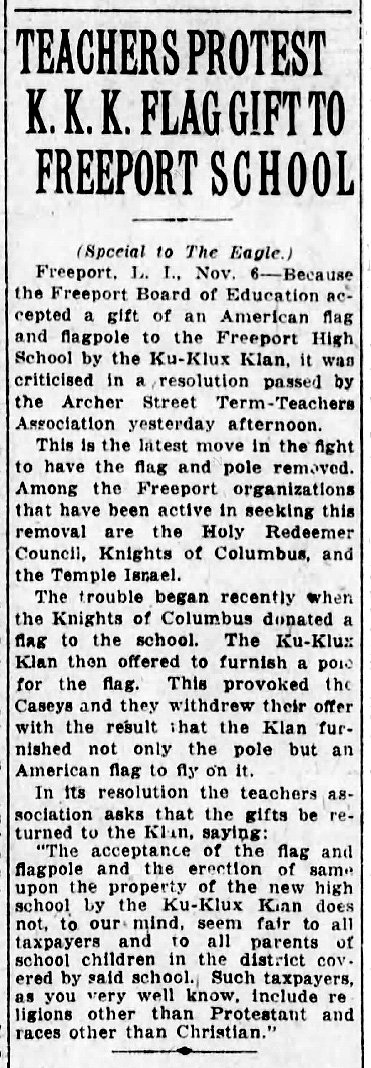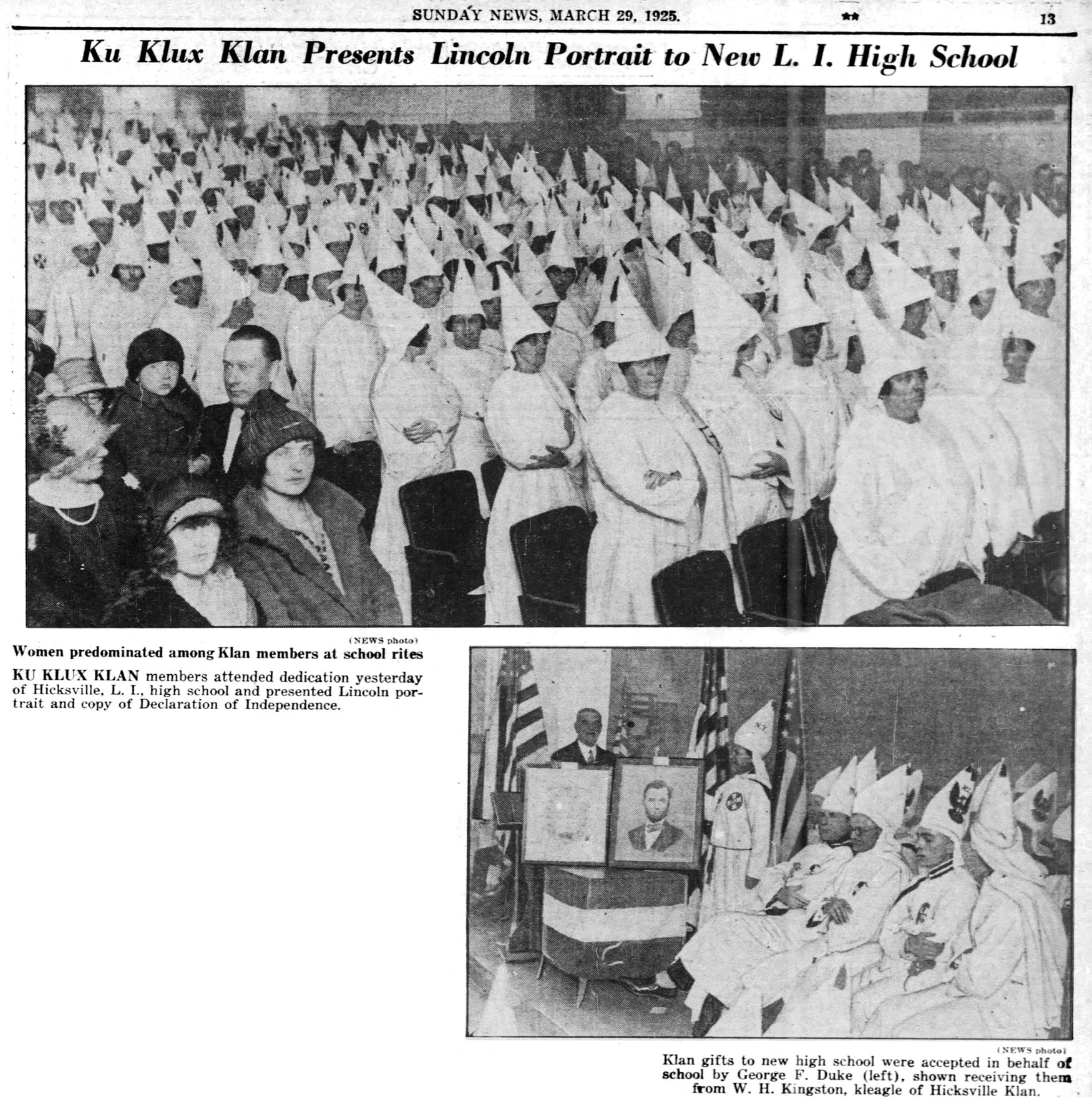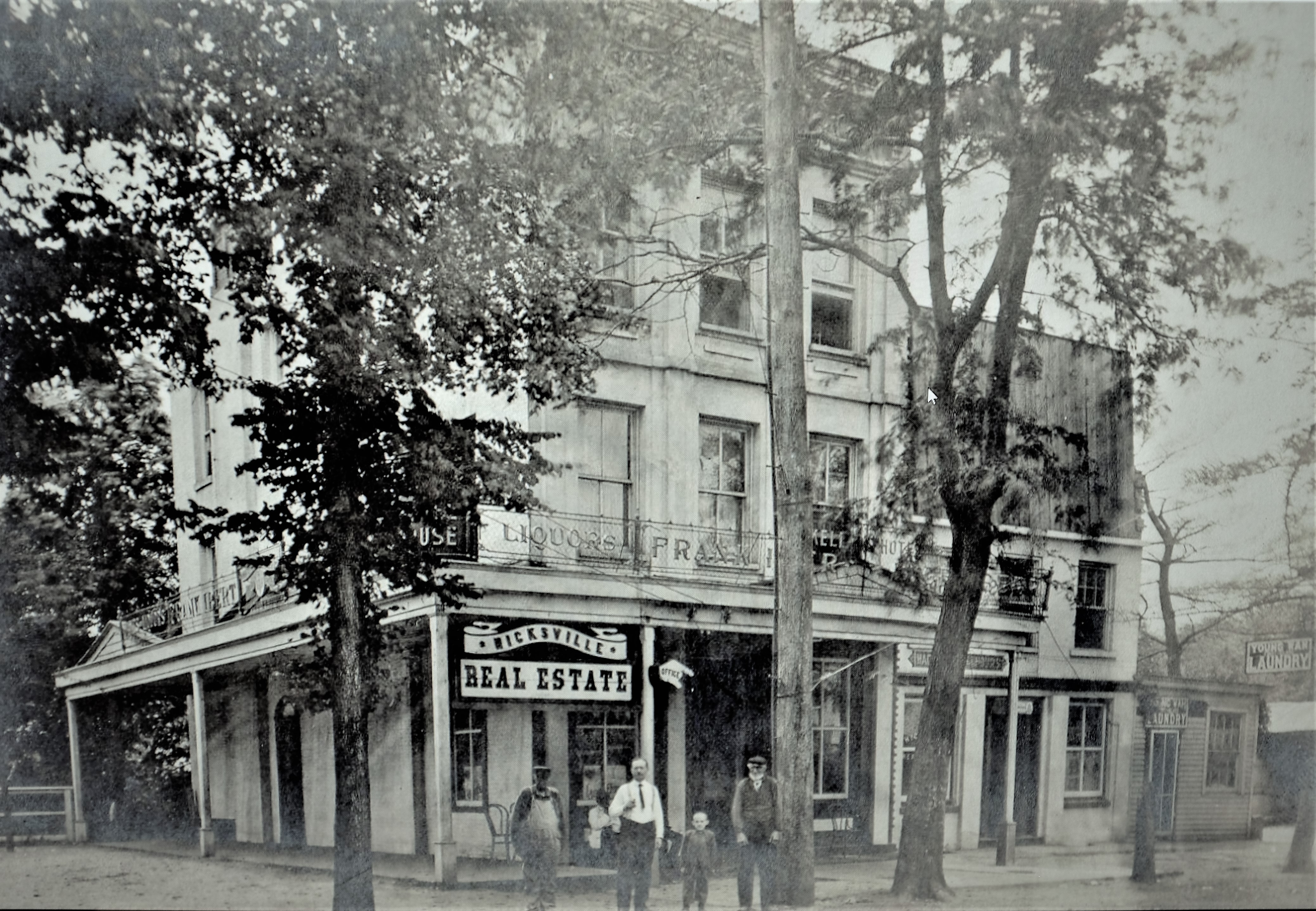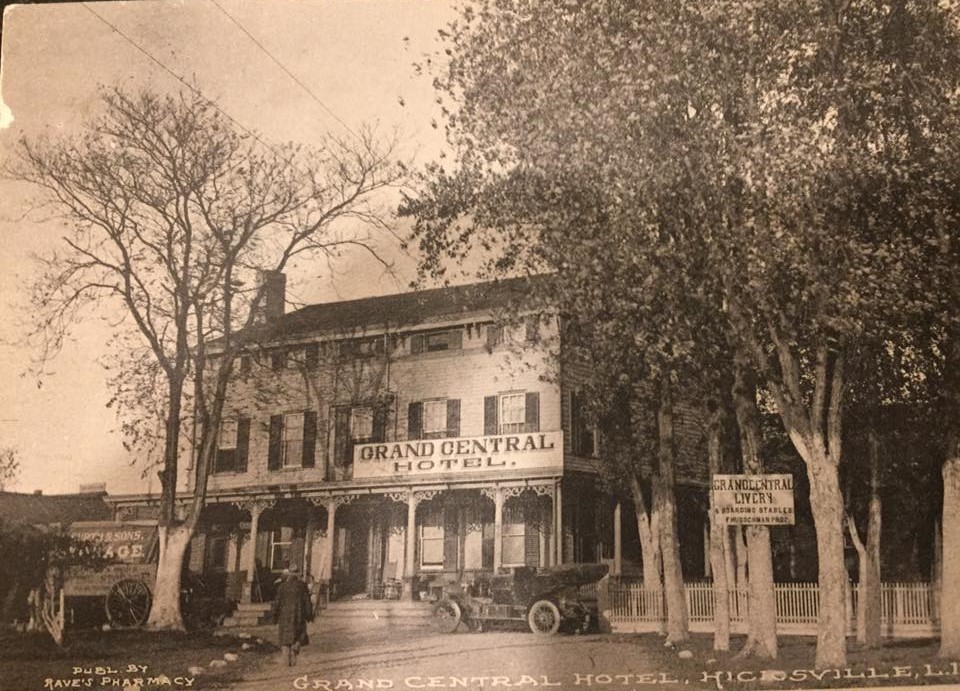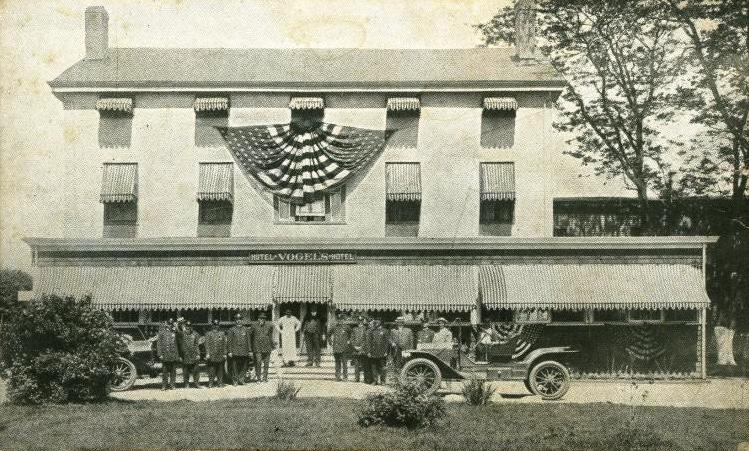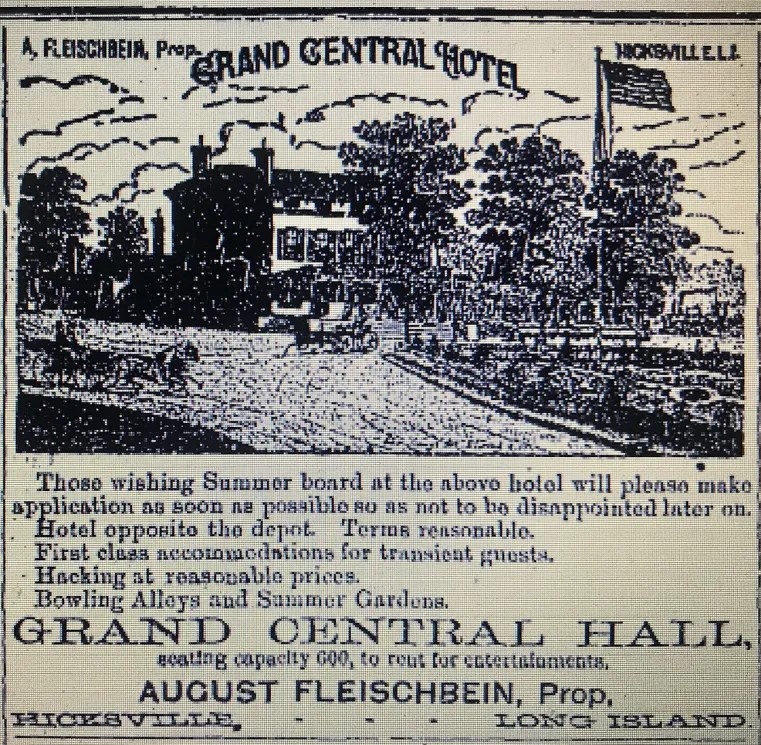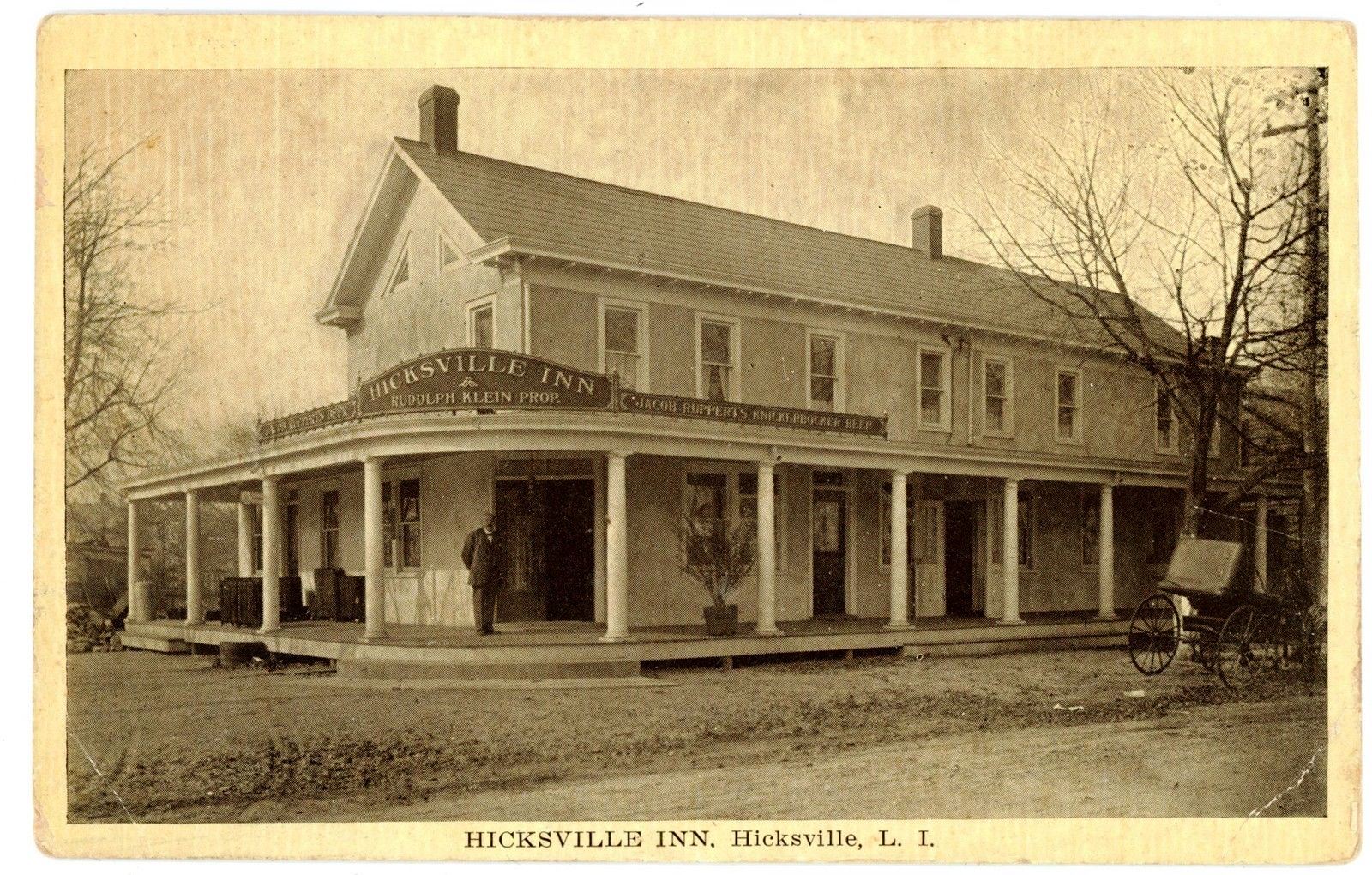Welcome to the August 2023 issue of HixNews!
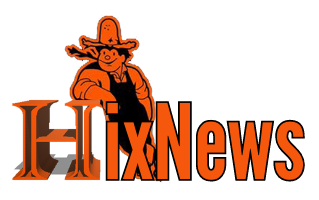 Are you in touch with a former teacher?
Are you in touch with a former teacher?
Have a favorite memory?
Just like to write?
Have reunion pictures to share?
Your HixNews Team
This month we have quite a variety of interesting things for you to read and even a video interview with an ex-HHS teacher. And September is already shaping-up to be another good one. So, stay tuned!
Mr. Joseph Scalia, Retired Hicksville Teacher
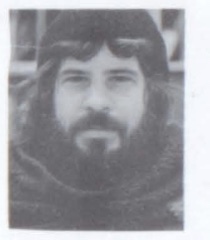 Mr. Joseph Scalia was a beloved English and Creative Writing teacher in Hicksville for 33 years. He taught in both the junior high and high schools.
Mr. Joseph Scalia was a beloved English and Creative Writing teacher in Hicksville for 33 years. He taught in both the junior high and high schools.
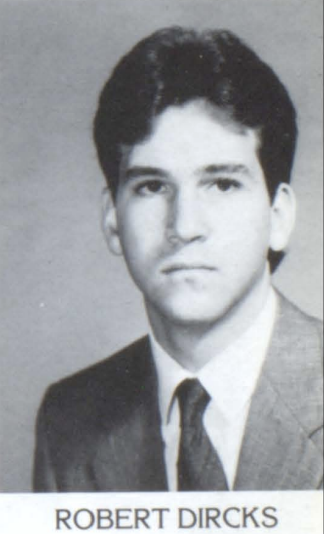 Mr. Scalia profoundly influenced many students, but Rob Dircks (Class of 1985) and Dave Dircks (Class of 1980) credit Mr. Scalia's teaching with forming the foundation for their future careers. Visit Goldfinch Publishing to see Rob and Dave's unique publishing company.
Mr. Scalia profoundly influenced many students, but Rob Dircks (Class of 1985) and Dave Dircks (Class of 1980) credit Mr. Scalia's teaching with forming the foundation for their future careers. Visit Goldfinch Publishing to see Rob and Dave's unique publishing company.
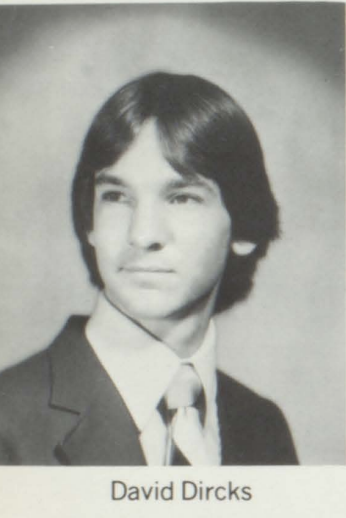 Please enjoy these videos with current Florida residents Stefanie Cedar Shames (Class of 1977, another of Mr. Scalia's students, and a HixNews editor) and interviewer Dave Shames (a HixNews recruit). Mr. Scalia is a published author, poet, and painter. His book, UFSD 71, has a picture of the junior high school on the cover.
Please enjoy these videos with current Florida residents Stefanie Cedar Shames (Class of 1977, another of Mr. Scalia's students, and a HixNews editor) and interviewer Dave Shames (a HixNews recruit). Mr. Scalia is a published author, poet, and painter. His book, UFSD 71, has a picture of the junior high school on the cover.
Click here for the Link to UFSD 71 and the Link to FREAKs. Be sure to read the About the Author section near the bottom of the pages!
The editors welcome you to share your own memories of Mr. Scalia with HixNews (and he is a subscriber so he might see your comments).
Do you have another favorite teacher you are in touch with who we could interview?
Interview - Intro
Interview - Complete
Editorial by Ron Wencer regarding the above interview:
I’d like to clarify one point, as the interview may imply to some people that the late Gerald Shanley, then an English teacher at HHS, was actually shot in Hicksville. He was not.
I was a student of Mr. Shanley at that point, and during the time he was recuperating, he stopped by the school to talk about the incident with his pupils. During that year, Mr. Shanley frequently supplemented his income by painting houses and re-shingling roofs. He usually did this together with Mr. Clark, a fellow member of the English Department.
 Long Island PressOn the day of the incident, they finished a roofing job in Queens, had some beers, and parted ways. Mr. Shanley realized he was not up to driving home to Bethpage, so instead he headed for his in-laws’ home, which happened to be nearby. As the interview states, he was in a neighborhood of look-alike houses, and he didn’t realize that he was one street over from his in-laws’ home. The door was unlocked, but no one was home; he went upstairs and fell asleep on the bed. The voices of the returning homeowners awakened him, and he saw that he was in the wrong place.
Long Island PressOn the day of the incident, they finished a roofing job in Queens, had some beers, and parted ways. Mr. Shanley realized he was not up to driving home to Bethpage, so instead he headed for his in-laws’ home, which happened to be nearby. As the interview states, he was in a neighborhood of look-alike houses, and he didn’t realize that he was one street over from his in-laws’ home. The door was unlocked, but no one was home; he went upstairs and fell asleep on the bed. The voices of the returning homeowners awakened him, and he saw that he was in the wrong place.
The article here from the Long Island Press is accurate about what ensued. Mr. Scalia’s recollection of Mr. Shanley’s wound is only partially correct – the bullet first went through the forearm, just above the wrist, and only afterwards penetrated the lower body. The arm injury made it impossible to write for some months afterward.

1924 photo by Triangle Studio of Photography (edited)
alternate versions available from Bettman Archive, Library of Congress, other sources
see Notes at end of this article
FOREWORD
I did not set out to write this article. While researching with another topic in mind, I stumbled upon a news story that shocked me. I felt compelled to learn more about what was behind it, to understand its context, and to write about it here. Although I hope to describe objectively how things came to happen, I cannot really accept them.
How in the world?
On a May evening in 1925, how in the world could 5,000 people have flocked to New South Road in Hicksville, in order to attend a nocturnal Ku Klux Klan rally, complete with burning cross?
On a night two months earlier, how in the world could 700-plus white-robed Klan members have proudly marched into the auditorium of the as-yet unopened new high school on Jerusalem Aveneue, and been welcomed by the President of Hicksville's Board of Education?
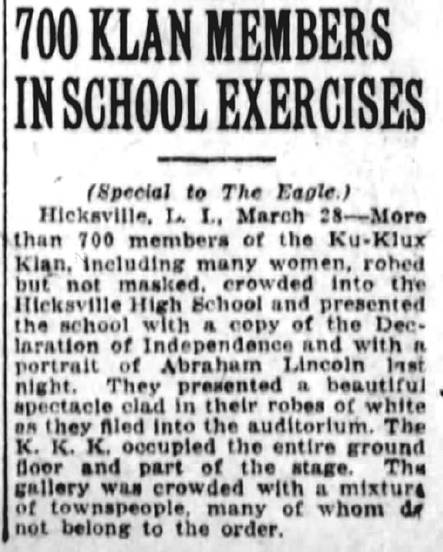
Brooklyn Daily Eagle, March 28, 1925, page 1
To see if we can understand - and there are no guarantees that we will - let's begin by looking back at Long Island in the 1920s, when for many people my age, our grandparents were starting to raise our parents' generation.
The 1920s Ku Klux Klan
Growing up in the second half of the 20th century, we repeatedly saw on television news that bigotry often has been tolerated, and at times has even flourished, in America. It bloomed after the Civil War, in the shape of the original Ku Klux Klan, which survived only briefly. Long after the KKK's demise, memories of it lingered in some quarters, and in 1915, aggrandized by time, those memories led to the creation of a second Klan. In it, bigotry found a new life behind a façade painted with religion, fraternity, and patriotism. The old pageantry was revived, augmented by something new to help incite the masses: tall crosses, flaming like beacons in the unlighted rural nights of the 1920s.
At the time, many of our grandparents on Long Island (or in Queens, or in New Jersey, or anywhere else in the North) had never heard of the first Klan. Thus, they were not on their guard when they started hearing about the second one. Whatever they heard from their acquaintances, neighbors, clergy, or even from the press was uncertain - no one yet knew much for sure. The new Klan used disinformation in order to appear mainstream, and it marketed itself directly to individuals, tailoring its message to their perceived needs.
Town by town, the Klan gained new toe-holds. How? One day, a Kleagle (a trained, paid organizer, and ideally a county resident) moved into a community, and started to blend in. As he met the townsfolk, he assessed each one, trying to identify susceptible people whom he could recruit for the Klan. There likely would be a few who thought that low-paid blacks or immigrants had cost them their jobs. There might be a merchant who faced competition from a business run by a Catholic or Jewish owner. A supporter of Prohibition might be outraged that her Italian neighbors were making wine to drink with their meals. A sincere Christian might think that local churches were not doing enough to support people who were in need.
Whatever potential vulnerability he found, a Kleagle would exploit, using people and groups he identified according to the contacts he had made. On behalf of the KKK, he would send a donation to, say, a widow with young children, who then would gratefully tell everyone she knew about the unexpected help. He would persuade businessmen that the Klan was a new and superior fraternal order, a better way of networking with others in the community to support good causes. He would donate flags to schools or veterans' organizations. The Kleagle would seek a local minister who might preach to his congregation about the KKK's support for Protestantism; if he found one, he would ask that Klan members be invited to come to the minister's church, and present it with a Bible or U.S. flag as the congregants watched.
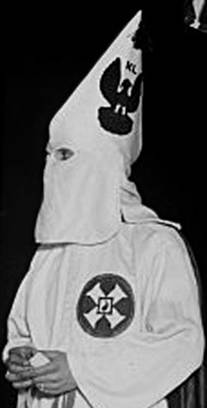 When interest was high enough, the Kleagle would establish a new klavern (i.e., a Klan chapter) in the town, and induct his protégés into it at a night-time rally, its location visible at a good distance because of its 15-foot oil-soaked flaming cross. The ceremony would feature rousing speakers from other klaverns, a band that played patriotic music, and perhaps the christening of a baby who was dressed in Klan garb. The Kleagle would be seen on the dais, recognizable only because his hood bore a large silhouette of an eagle, with the letters "KL" above it. With luck, the rally would result in additional memberships and donations.
When interest was high enough, the Kleagle would establish a new klavern (i.e., a Klan chapter) in the town, and induct his protégés into it at a night-time rally, its location visible at a good distance because of its 15-foot oil-soaked flaming cross. The ceremony would feature rousing speakers from other klaverns, a band that played patriotic music, and perhaps the christening of a baby who was dressed in Klan garb. The Kleagle would be seen on the dais, recognizable only because his hood bore a large silhouette of an eagle, with the letters "KL" above it. With luck, the rally would result in additional memberships and donations.
One should not mistake the Kleagle for a missionary, or for a clergyman founding a new church; he was a salesperson who worked on commission. To him, recruiting meant money. From him, his recruits bought their robes, hoods, Bibles, pamphlets, and other paraphernalia; he kept half the profits from all sales. When a town no longer profited him, he moved on to start a new klavern elsewhere.
It does seem likely that some people naïvely joined the Klan for benign purposes, only to later regret doing so, but there is no way of knowing to what extent that was true. For that matter, one cannot really know the total number of people in any given community who joined the second KKK. Member rolls were kept secret; later interviews with former officers yielded inconsistent figures. Crowd estimates at public Klan rites were only guesses - the large rallies usually happened at night in open fields, and once the crowd reached a certain size, there was no reliable way to estimate how big it was.
Even if one allows for such imprecision, it is disturbing to read the report in the Times of June 22, 1923 that 25,000 people had gathered in East Islip to attend the initiation of 1,400 men and women into the Klan. As for the percentage of Americans who became members, an estimate which has been accepted (with grains of salt) by some local writers is that at the mid-1920s peak, one Long Island adult in seven was a Klan member.
Context
From our perspective, the notion that anyone would rush to join such a group without fully understanding it seems incredible - after all, from the very beginning there were two obvious red flags. First were the membership restrictions: immigrants were unwelcome; Catholics were unwelcome; Jews were unwelcome; blacks were unwelcome. Second, at ceremonies in or near their home towns, members wore hoods or no Klan garb at all - they did not want their neighbors to know they were members. Putting these two red flags together, not much imagination was needed to foresee where things were likely headed.
I reiterate that I am not trying to excuse what happened, but rather to probe how things came to pass. To Long Islanders in the 1920s, perhaps - only perhaps - a mitigating factor was the everyday acceptance of many things which we find objectionable today. Could people truly not have known any better? They lived in a time when ethnic, religious, racial, and gender discrimination influenced hiring practices, and determined people's admissibility to unions, schools, professions, and fraternal organizations. At first glance, the KKK may have seemed just one more part of the status quo.
1920s Hicksville was not isolated from this world, and it could not have been immune. The village was not completely white. Censuses list a small number of African-American residents; some were domestic servants residing in their employers' homes, and others simply people with jobs who lived on their own. Hicksville also had its immigrants, its Catholics, and its Jews. As was true of other locales, black people named in news stories about Hicksville were always identified as "Negroes" (as if their race was automatically relevant to whatever they did, or whatever happened to them). As in any other American town, white people in Hicksville wore blackface when appearing in Minstrel Show fundraisers. Old newspapers tell us that at least eight groups - half of them consisting of children - staged such performances: the Masons, Firemen, Athletic Club, Veterans of Foreign Wars, Boy Scouts, children of St. John's Protectory, elementary grades of the School at Nicholai Street, and Junior Class of the High School.
***
The Klan In and Around Hicksville

Brooklyn Daily Eagle, September 3, 1929
News reports of Klan activities within Hicksville and in surrounding communities suggest that these places embraced the KKK as much as the rest of Long Island did. Below are summaries of local 1920s newspaper articles, from which readers can form their own opinions of what went on:
- A Hicksville widow wrote to the Long-Islander newspaper, publicly thanking the KKK for donating groceries to her needy family.
- A "large number of people" drove from Farmingdale to East Rockaway for a fund-raiser in support of a new local war memorial. For reasons not explained, attendees were asked to vote for the "most popular patriotic organization." The overwhelming winner of the contest was the Klan.
- While taking an evening walk with his wife, a Jewish pharmacist in Freeport was kidnapped by three men who claimed to be Klansmen, two weeks after ten such men had intimidated him at his drug store. He was threatened with reprisals if he did not shutter his business and leave Freeport, and was offered money as a further incentive. Some hours after midnight, he was freed on a deserted roadside in Hicksville.
- On the eve of one July 4th, presumably as a display of Klan patriotism, wooden crosses were simultaneously erected and set afire in twelve communities on Long Island. In Sea Cliff, the cross was so close to the war memorial that the latter was damaged by the flames.
- A Klan speaker in Suffolk publicly denounced the Pope and all Catholics, and proclaimed that the KKK planned to drive "Hebrew merchants" out of business on Long Island by establishing competing "Christian" businesses.
- The annual reports of both the Hicksville and the Bethpage (the latter still called " Central Park ") Public Libraries indicated that they had accepted financial donations from the Klan.
- Early during the 1925 Hicksville Memorial Day parade, the KKK surreptitiously placed a large wreath around the World War I Memorial (at that time, the boulder was still located near the LIRR station). When the parade reached the Memorial for the scheduled placing of wreaths, the sight of the Klan wreath triggered fights between Klansmen and a number of Knights of Columbus and other Catholics.
Note: Of course, people other than Catholics also opposed the Klan's presumptuous claim upon America's war dead. At a wreath-placement ceremony in Rockville Centre, a similar brawl occurred between the KKK and the American Legion.
- When a Bethpage fireman died, his funeral service was conducted at a Lutheran church - but his burial at Hicksville's Plainlawn Cemetery was performed according to the Klan funeral rite, which typically is conducted in full KKK regalia.
- In Hicksville, 5,000 people attended a "Klan and friends only" rally / initiation in an open field beside New South Road. A cross burned. Local police dutifully kept away those who had not been invited. One feature of the rally was the christening of an infant dressed in Klan garb.
- An aside: That child would have been born around the same time as many of our parents!
- As in Hicksville, Syosset officials welcomed a ceremonial visit by the Klan to its high school auditorium, and accepted its gifts.
- The Klan donated the largest trophy to be awarded at the Firemen's Tournament in Hicksville.
- The "Honorable Knights and Ladies of the Ku Klux Klan" were guests at a special Sunday service at the Methodist Episcopal Church in Bethpage.
- After more than a decade of acceptance on Long Island, in 1926 the KKK felt sufficiently at home to hold a four-day state convention (Klorero) at the Mineola Fair Grounds. New York's Grand Dragon and his senior officers, aka the Nine Hydras, presided.
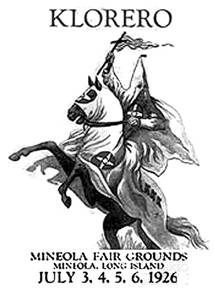
from The Ku Klux Klan in Sayville and Long Island at http://www.oocities.org/timmlimm/clan.htm
Reading the above news items, one sees the diverse and inconsistent faces which the Klan presented to people - and one also sees that, in large part because of them, it thrived in the 1920s.
March 27, 1925
Below is a more detailed news report of the Klan ceremony -- it was NOT the school's official dedication, which would happen two months later, without the Klan -- at Hicksville High School. Compared to the author of the Eagle report, who evidently was much moved by the "beautiful spectacle," the Long-Islander reporter (John Puvogel, a former Hicksville Board of Education member) was restrained and objective. One can only speculate as to how hard the Klan had to work to persuade the Board to host this event.
Huntington Long-Islander, March 28, 1925
I have been able to learn only a little about those named in this article.
Paul F. Lindner (spelled above as Linder)
In the daytime, the Exalted Cyclops of Hempstead (also described elsewhere as the Cyclops of Nassau County) was a well-known farmer in Malverne, who also dabbled in politics. In 1913, he was the unsuccessful Democratic candidate for Hempstead Town Supervisor. Afterward, the IRS prosecuted his campaign chairman because of financing irregularities in the campaign.
Less than a week before appearing in the ceremony at Hicksville High School, Lindner was in the news again. A cross had been erected and ignited on his property. The blaze was extinguished by the local fire department, but about an hour later, the same thing happened again. This time, as the firemen were preparing to extinguish the burning cross, four sticks of dynamite attached to it exploded. The resultant crater was described as being "the size of an automobile." The news report stated that the firemen who were trying to extinguish the flames, unaware of the dynamite, barely escaped serious injury.
Police ascribed the incident(s) to unknown members of the Klan, who likely were celebrating the day's victories of three KKK-supported candidates in a primary election. Surprisingly, there was no mention of whether or not the police knew that Lindner was the highest-ranking Klan official in the Town of Hempstead. No arrests were made.
Several years later, a newspaper article noted that Lindner had become the "Superintendent of Malverne Protestant Sunday Schools."
Frank H. Smith
Censuses do not seem to show any Frank H. Smith living at this time in Rockville Centre (or anywhere else on Long Island), nor have I found any other reference to him. Miss Olindt also has left behind no record of her existence. The same is true for the mother and father whose son was christened at the Klan rally in Hicksville; neither his name nor his parents' names seem to appear on any records I have been able to check.
One suspects that KKK members sometimes adopted noms de guerre when speaking to the press, much as they often used hoods to conceal their identities.
George A. Duke
Duke had had a long career with the Pennsylvania Railroad, where he gradually advanced from an entry-level brakeman position to his final position, Manager of Baggage Handling at New York's busy Pennsylvania Station (a demanding and prestigious job, comparable to someone's today being responsible for all baggage handling at LaGuardia Airport). Duke had been a resident of Hicksville for less than ten years when his fellow residents and Board members were so impressed by him that they chose him as the successor to the retiring long-serving incumbent Board President, William Duffy.

Huntington Long-Islander, July 21, 1922
As a candidate, Duke's main platform plank appears to have been a promise to discover the cause of high faculty turnover at the School. His supporters argued that his daughter's being a Hicksville student would mean a commitment to his work at Board, and that his being retired would give him time to devote to the job. His other qualifications are now forgotten. We do know, however, that like many other Americans who were born in the 1870s, his personal experience with formal education was limited. According to the 1940 U.S. Census, he had left school after 7th grade. Ironically, this means he had less formal education than the members of Hicksville's Board of Education who served under him.
***
Conclusion
Obviously, the KKK receded as the years passed. Did it leave any lasting stain on the community? Did the School Board's welcome imbue the Klan with legitimacy in the eyes of some parents or students, and reinforce their feelings of bigotry? One hopes not, but in hindsight it is concerning that no one in Hicksville seems to have publicly criticized the Board's action. Granted, other school districts also cooperated in such ceremonies - but in at least one of those towns, the ceremony spawned protests.
Some months before Hicksville hosted its ceremony, the board in Freeport was excoriated for having done the same thing. An association of teachers protested the acceptance of a flag and flagpole from the Klan; Jewish and Catholic groups in the community also protested. Curiously, news of these protests was published in the same newspaper that covered Hicksville news, more than three months before the Klan presentation at Hicksville High School , and Hicksville's Board of Education chose to proceed with the event anyway. Presumably, it did not expect, or at least was not very concerned about, similar repercussions.
Brooklyn Daily Eagle, November 6, 1924
I think that many of us would take even more pride in Hicksville if today we could look back, and know that not all its citizens welcomed the Ku Klux Klan as their Board of Education had.
***
Post Script
This is a little mockery of the Klan, published in the Brooklyn Daily Eagle, October 2, 1924:
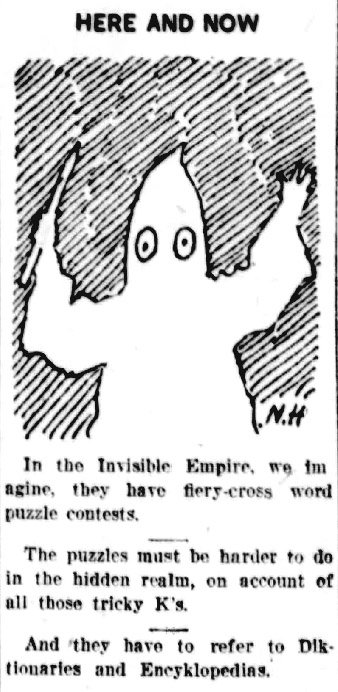
***
The photograph used in this article's title block, part of which also was used for the picture of the Kleagle, was NOT taken in Hicksville, but elsewhere on Long Island, at a similar rally. The infant in the photo is a boy of 8 weeks, not one of 11 months, as was reported in the news story about the rally on New South Road.

It is both fascinating and disturbing to look examine this picture. For example, in the shadows on the far right (perhaps an appropriate location) stands a mother, whose young daughter sits on a railing in order to better view the proceedings. One wonders into what sort of adults these small children grew.
Most of the material in this article has been abstracted from news stories which appeared in 1920s in the Huntington Long Islander, the Brooklyn Daily Eagle, and the New York Times. Additional material comes from the Suffolk County News for February 13, 1953.
For more information, the following sources are worth consulting:
Temperance, Traditionalism, and the Ku Klux Klan in Syosset-Woodbury
Tom Montalbano
https://www.oysterbayhistorical.org/uploads/4/9/5/1/4951065/kkk_in_syosset.pdf
Klokards, Kleagles, Kludds, and Kluxers: The Ku Klux Klan in Suffolk County, 1915-1928, Part One
Jane S. Gombieski
https://ir.stonybrook.edu/jspui/bitstream/11401/60287/1/i001.pdf
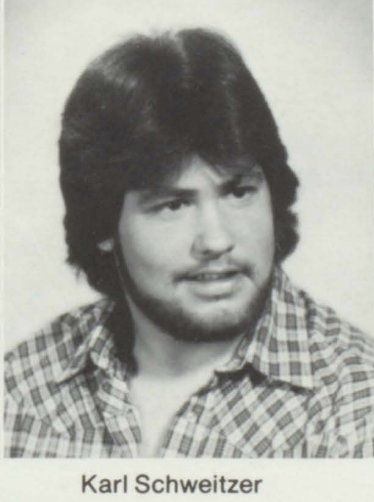
Hicksville Hotels were the end of the line for the Railroad and a Boom for the Hicksville Community.
Hicksville was a place where the middle class made their home and it was the population boom of the 1950s that doubled, then tripled its population. Schools were built faster than anywhere on Long Island.
The hamlet we called home was a community that helped win World War II. Although Grumman was in Bethpage, it got its early start on South Oyster Bay Road when it purchased the Neder family farm. The planes that Grumman built were supported by many defense subcontractors, dotting many areas of our community along Duffy Avenue, West John Street, Cantiague Rock Road, and New South Road.
For many of the families that have been here for many years, they knew that Hicksville was the place to be. Some may recall the Hicksville Aviation Club, where Charles Lindbergh, Amelia Earhart, and the rich and famous landed their aircraft. However, even before then, around the time of the Civil War, 30 years after Hicksville was established, the Long Island Railroad brought many people east from New York City.
>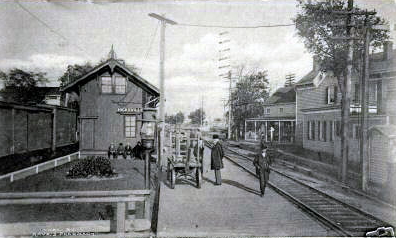 Railroad Depot by Herzog's BuildingOver the span of twenty years, Hicksville had over twelve hotels, mainly around the railroad station at Herzog Place and along Broadway. Travelers, brought east by the railroad, would need to rest at the end of the rail line, Hicksville before proceeding further east on the island by horseback or carriage. Perhaps the most famous hotel of the early 1900’s era was the Grand Central Hotel. This was the hub of social life for many residents and local organizations. Stories have been passed down that this was the place for those who had money.
Railroad Depot by Herzog's BuildingOver the span of twenty years, Hicksville had over twelve hotels, mainly around the railroad station at Herzog Place and along Broadway. Travelers, brought east by the railroad, would need to rest at the end of the rail line, Hicksville before proceeding further east on the island by horseback or carriage. Perhaps the most famous hotel of the early 1900’s era was the Grand Central Hotel. This was the hub of social life for many residents and local organizations. Stories have been passed down that this was the place for those who had money.
The Earliest Hotels
Two of the earliest hotels were the Wolgast Hotel located on Broadway by the railroad depot and the Keller’s Hotel in the same vicinity of Herzog Place at Train Depot. It was also known as the White House Hotel. The Keller Hotel was a three-story masonry structure, and the Bank of America now sits on the property. The Keller family continues to have roots in Hicksville.
 American Hotel - Circa 1890Then there was Gottert’s Hotel, owned and operated by Charles Gottert. He was a trained carpenter, and purchased the hotel from Frederick Herzog. Charles built the building that local historians will know as the “Kallert Building”. It was on what was known as Gottert’s Block. The American Hotel was also owned by Charles Gottert. Later, it was known as the Sportsman Hotel - The Sportsman's Hotel was located at the corner of Mary Street (Marie Street) and Broadway. It eventually became Henry Huettners second store.
American Hotel - Circa 1890Then there was Gottert’s Hotel, owned and operated by Charles Gottert. He was a trained carpenter, and purchased the hotel from Frederick Herzog. Charles built the building that local historians will know as the “Kallert Building”. It was on what was known as Gottert’s Block. The American Hotel was also owned by Charles Gottert. Later, it was known as the Sportsman Hotel - The Sportsman's Hotel was located at the corner of Mary Street (Marie Street) and Broadway. It eventually became Henry Huettners second store.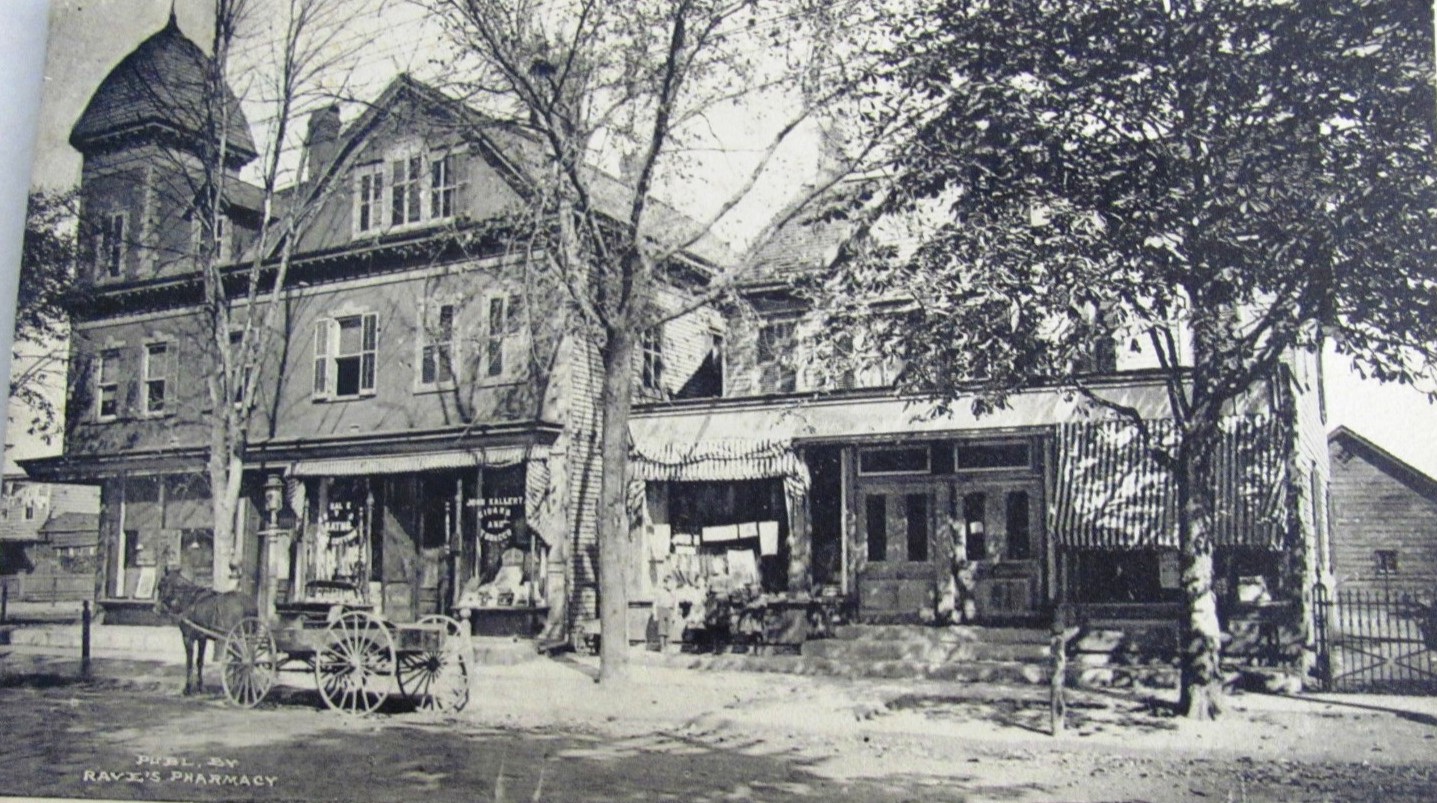 Gottert's Hotel Circa 1890
Gottert's Hotel Circa 1890
In addition, there was Vogel’s Hotel, which was also known as the Grand Central Hotel. This hotel was grand in size and located on Broadway, just North of the Railroad tracks on the East side. The hotel was sold a third time and was named the Hicksville Hotel. The Hicksville Hotel was owned by H.J. Remmert and August Hauser.

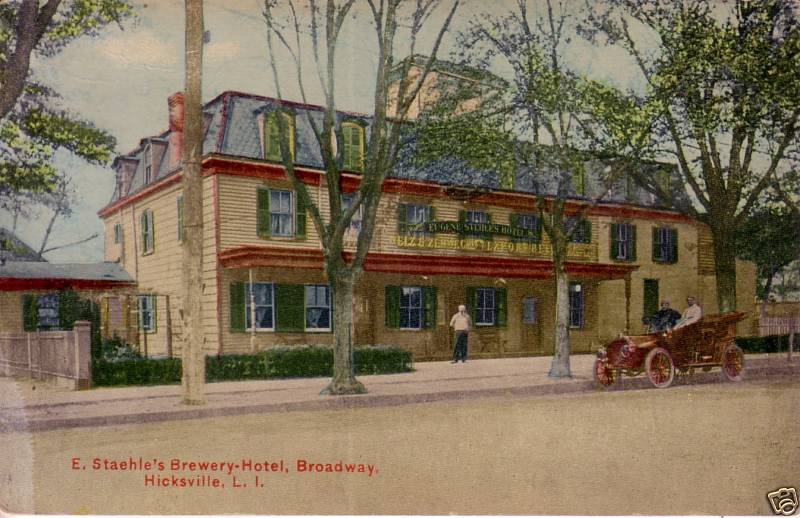 Staehle's Hotel & Brewery Circa 1905
Staehle's Hotel & Brewery Circa 1905
There was Staehle’s Brewery & Hotel which was owned and operated by Eugene Staehle and located on Broadway and Cherry Street. He was a German immigrant and a master brewer.
More Hicksville Hotels
 Reinhardt Hotel - Broadway HotelFolks may recall the Broadway Hotel, later known as Reinhardt’s Hotel located at Broadway and East Carl Street. Frank Reinhardt was the last owner of the hotel. Before Frank purchased the hotel, he worked for about five years at the Windsor Hotel across the street. Members of the Reinhardt family still reside in Hicksville and on Long Island. The hotel was later sold to Schwartz Furniture and the “bones” of the hotel remain in place today, hidden behind what is now the façade of TAS Learning Center.
Reinhardt Hotel - Broadway HotelFolks may recall the Broadway Hotel, later known as Reinhardt’s Hotel located at Broadway and East Carl Street. Frank Reinhardt was the last owner of the hotel. Before Frank purchased the hotel, he worked for about five years at the Windsor Hotel across the street. Members of the Reinhardt family still reside in Hicksville and on Long Island. The hotel was later sold to Schwartz Furniture and the “bones” of the hotel remain in place today, hidden behind what is now the façade of TAS Learning Center.
 Horse Shoe Inn 1900Another hotel was the Horseshoe Inn located on East Barclay Street and was owned and operated by Dr. Jacob Boslet. The hotel was affectionately know as Boselet’s Place” and was situated next door to the Ofenloch Garage and Blacksmith Shop. This structure was the last of the hotels to be torn down. It would be operated as the Tower Restaurant & Bar through the 1980’s when JVC Auto Collision purchased the property and expanded their business.
Horse Shoe Inn 1900Another hotel was the Horseshoe Inn located on East Barclay Street and was owned and operated by Dr. Jacob Boslet. The hotel was affectionately know as Boselet’s Place” and was situated next door to the Ofenloch Garage and Blacksmith Shop. This structure was the last of the hotels to be torn down. It would be operated as the Tower Restaurant & Bar through the 1980’s when JVC Auto Collision purchased the property and expanded their business.
The Germania Hotel, owned and operated by Adolph Lauck, was located on the corner of Broadway and West Marie Street. It was later torn down to make room for Buettner’s Department Store. In 1893 it was run by August Schreiber. There are no photographs available for the Germania Hotel, just the references in the Huntington Long Islander Newspaper.
The Last of Hicksville's Hotels
One of the last of Hicksville’s Hotels, which many still remember today, was the Hicksville Inn. The Hicksville Inn was located at the intersection of Broadway and West John Street. My attention is given to the former Hicksville Inn because it survived the years better than the other old hotels. While looking through old newspapers, there were significant and important events that went hand in hand with our community. From Kiwanis Club, Lions Club, as well as fire department anniversary events that took place in the Hicksville Inn, to the countless weddings, political events, and holiday parties celebrated in its dining area. In 1957, the last of our hotels would be torn down to make room for the new Central Federal Savings and Loans. Wendy's now occupies the location. It was an end of era.
So, just before the chatter starts, there are still two hotels left in Hicksville. The Hicksville Motor Lodge on Duffy Avenue, originally the Howard Johnsons Motel is now known as the Econo Lodge. Finally there is the Days Inn on South Oyster Bay Road, which was once the Astro Motor Inn. I’m thinking they are not same and the days of holding events and staying over, just isn’t the same either.


If you plan to go, click the link to say you are attending. https://partiful.com/e/hCsu3p1hXnnF7qlVSEN2

The Editors hope you find these to be funny, too! Click on an image to enlarge it. Use your mouse or arrow keys to flip through them.

